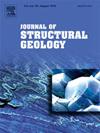发震构造的高分辨率地质研究
IF 2.6
2区 地球科学
Q2 GEOSCIENCES, MULTIDISCIPLINARY
引用次数: 0
摘要
强烈地震是最具破坏性的自然灾害之一,有可能对世界各地的社区和关键基础设施造成灾难性的破坏。构造地质和地球物理研究孕震特征仍然是地震研究的基石,为推动这些强大事件的动态过程提供了重要的见解。地貌学、地层学和构造地质学的高分辨率研究可以详细了解地震变形的时空特征,包括同震、震后和震间阶段,可能跨越多个地震旋回。尖端技术的集成-如来自光探测和测距(LiDAR)的高分辨率数据,运动结构(SfM),地球物理调查,钻井和摩擦实验室实验-加上精确的测年方法,能够在不同时间范围内(从年到数百万年)以高空间分辨率进行定量分析。摩擦实验技术和数值模拟的最新进展也大大改善了我们对孕震构造内部变形过程的理解。本期特刊汇编了全球不同构造背景下与发震构造相关的构造活动研究,重点是利用高分辨率空间数据和复杂的测年技术。这些贡献的目的是加深我们对强震动力学的理解,提高我们评估地震危害的能力。本文章由计算机程序翻译,如有差异,请以英文原文为准。
High-resolution geological studies of seismogenic structures
Strong earthquakes rank among the most devastating natural disasters, with the potential to inflict catastrophic damage on communities and critical infrastructure worldwide. The structural geological and geophysical study of seismogenic features remains a cornerstone of earthquake research, providing essential insights into the dynamic processes driving these powerful events. High-resolution investigations in geomorphology, stratigraphy, and structural geology allow for a detailed understanding of the spatial and temporal characteristics of seismic deformations, encompassing co-seismic, post-seismic, and inter-seismic stages, potentially spanning multiple earthquake cycles. The integration of cutting-edge techniques—such as high-resolution data from Light Detection and Ranging (LiDAR), Structure from Motion (SfM), geophysical surveys, drilling, and frictional laboratory experiments—coupled with precise dating methods, enables quantitative analysis at high spatial resolutions across diverse temporal ranges, from years to millions of years. Recent advancements in frictional experimental techniques and numerical modeling have also significantly refined our understanding of deformation processes within seismogenic structures. This special issue compiles research on tectonic activities related to seismogenic structures from varied global tectonic setting, with a focus on leveraging high-resolution spatial data and sophisticated dating techniques. The contributions aim to deepen our understanding of the dynamics underlying strong earthquakes and improve our capacity for seismic hazard assessment.
求助全文
通过发布文献求助,成功后即可免费获取论文全文。
去求助
来源期刊

Journal of Structural Geology
地学-地球科学综合
CiteScore
6.00
自引率
19.40%
发文量
192
审稿时长
15.7 weeks
期刊介绍:
The Journal of Structural Geology publishes process-oriented investigations about structural geology using appropriate combinations of analog and digital field data, seismic reflection data, satellite-derived data, geometric analysis, kinematic analysis, laboratory experiments, computer visualizations, and analogue or numerical modelling on all scales. Contributions are encouraged to draw perspectives from rheology, rock mechanics, geophysics,metamorphism, sedimentology, petroleum geology, economic geology, geodynamics, planetary geology, tectonics and neotectonics to provide a more powerful understanding of deformation processes and systems. Given the visual nature of the discipline, supplementary materials that portray the data and analysis in 3-D or quasi 3-D manners, including the use of videos, and/or graphical abstracts can significantly strengthen the impact of contributions.
 求助内容:
求助内容: 应助结果提醒方式:
应助结果提醒方式:


